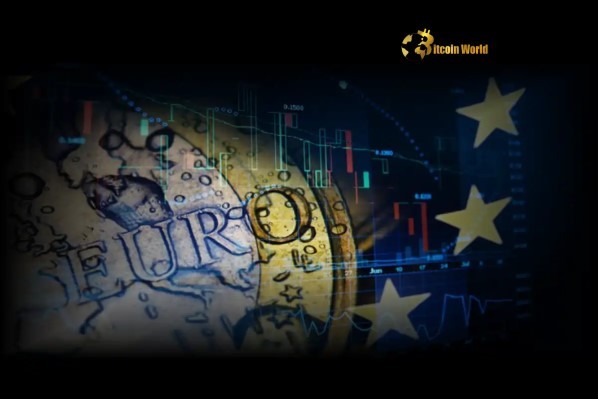BitcoinWorld

Tether’s Monumental Achievement: Stablecoin Dominance in US Treasury Holdings
In a development that has sent ripples across the global financial landscape, Tether, the world’s largest stablecoin issuer, has achieved a truly monumental feat. Recent data confirms that Tether now holds more U.S. Treasuries than several sovereign nations, including South Korea. This incredible milestone underscores the growing influence of digital assets in traditional finance and prompts a closer look at how a cryptocurrency entity can command such significant economic power. It’s a clear signal that Tether is not just a participant but a major player in the global financial arena.
What Does Tether’s Surpassing of Nations in US Treasury Holdings Mean?
The news, initially highlighted by crypto analytics firm Messari, revealed that Tether’s holdings in U.S. Treasuries have climbed past an astounding $127 billion. This figure places Tether as the 18th largest holder of U.S. government debt globally, a position that puts it ahead of South Korea, which holds approximately $124 billion. This isn’t just a number; it represents a significant shift in the financial world. But what exactly are U.S. Treasuries, and why is this so important for Tether?
- U.S. Treasuries Defined: These are debt instruments issued by the U.S. Department of the Treasury to finance government spending. They are considered one of the safest and most liquid investments globally, often serving as a benchmark for risk-free returns.
- Significance for Tether: As a stablecoin, USDT is designed to maintain a 1:1 peg with the U.S. dollar. To back this peg, Tether holds reserves, a substantial portion of which are U.S. Treasuries. The sheer volume of these holdings demonstrates the scale of USDT’s circulation and the underlying assets supporting its stability.
- A New Kind of Global Player: For a private company, especially one operating in the relatively nascent cryptocurrency space, to hold more U.S. government debt than an entire country is unprecedented. It highlights the growing financial muscle of stablecoin issuers and their integration into traditional financial systems.
To put Tether’s position into perspective, consider this comparison:
| Entity | US Treasury Holdings (approx. billions USD) | Global Rank (approx.) |
|---|---|---|
| Tether | $127 | 18th |
| South Korea | $124 | 19th |
| United Kingdom | $670 | 6th |
| Germany | $90 | 25th |

Why is Tether Amassing Such Significant US Treasury Holdings?
The primary reason for Tether’s substantial U.S. Treasury holdings lies in its operational model as a stablecoin. Unlike volatile cryptocurrencies like Bitcoin or Ethereum, stablecoins like USDT aim to provide price stability by pegging their value to a stable asset, in this case, the U.S. dollar. For every USDT issued, Tether aims to hold an equivalent value in reserves.
- Reserve Management: Tether holds a diversified portfolio of reserves, including cash equivalents, commercial paper, corporate bonds, and, most importantly, U.S. Treasury bills. These Treasuries are chosen for their liquidity and safety, ensuring that Tether can meet redemption requests reliably.
- Yield Generation: Holding U.S. Treasuries also allows Tether to generate yield on its reserves. This yield contributes to the company’s profitability, which can then be reinvested or used for operational expenses, strengthening its overall financial position.
- Market Demand: The immense demand for USDT across the global crypto ecosystem drives the need for Tether to expand its reserve base. USDT is widely used for trading, remittances, and as a store of value within the crypto market, leading to a continuously increasing supply and, consequently, larger reserve requirements.
- Transparency and Trust: While historically facing scrutiny over its reserve transparency, Tether has made significant strides in providing regular attestations and reports on its reserve composition. The verifiable increase in high-quality assets like U.S. Treasuries helps build greater trust and confidence among users and regulators regarding the stability and backing of USDT.
The Broader Implications of Tether’s Treasury Dominance
Tether’s emergence as a major holder of U.S. Treasuries has several profound implications for both the crypto market and traditional finance:
- Increased Interconnectedness: It signifies a deeper integration between the cryptocurrency world and sovereign financial systems. The stability of a major stablecoin like Tether is now directly tied to the health of the U.S. debt market.
- Influence on Money Markets: Tether’s large-scale purchases of short-term U.S. Treasuries mean it has become a significant participant in the money markets. While not yet comparable to central banks or large institutional investors, its growing footprint cannot be ignored.
- Regulatory Scrutiny: This new level of financial clout will undoubtedly attract increased attention from regulators globally. Governments and financial bodies will likely intensify their efforts to understand and regulate stablecoins, viewing them as systemic entities rather than niche crypto products.
- Validation of Stablecoin Model: For proponents of stablecoins, Tether’s achievement serves as a powerful validation of the stablecoin model. It demonstrates the ability of digital currencies to bridge the gap between volatile crypto assets and the stability of fiat currencies, providing a reliable on-ramp and off-ramp for digital economies.
Navigating the Challenges and Scrutiny Around Tether
Despite its impressive growth, Tether has not been without its challenges and a fair share of scrutiny. Concerns about transparency, reserve composition, and regulatory compliance have historically shadowed the stablecoin.
- Transparency Concerns: For years, critics questioned the full backing of USDT, demanding more frequent and comprehensive audits. While Tether has improved its reporting, moving from less frequent attestations to more regular updates, some still call for a full, independent audit by a Big Four accounting firm.
- Regulatory Pressure: As Tether’s financial footprint expands, so does the regulatory spotlight. Governments worldwide are developing frameworks for stablecoins, often viewing them as a potential source of systemic risk if not properly managed and regulated. The sheer size of Tether’s reserves means it’s now firmly on the radar of financial stability watchdogs.
- Market Volatility Impact: While Treasuries are stable, the broader crypto market remains volatile. Any significant market event or ‘bank run’ scenario on Tether could test its ability to redeem all USDT in circulation, although its high-quality reserves are designed to mitigate this risk.
- Competition: The stablecoin market is increasingly competitive, with new entrants and existing players like USDC and BUSD vying for market share. Tether’s ability to maintain its dominance will depend on continued transparency, robust reserve management, and adapting to evolving regulatory landscapes.
The Future of Tether and Global Finance
Tether’s journey from a niche crypto project to a top holder of U.S. Treasuries is a testament to the rapid evolution of digital finance. Looking ahead, several trends could shape the future trajectory of Tether and its role in the global financial system.
- Continued Growth and Diversification: As the crypto economy expands, so too might the demand for stablecoins. Tether could continue to grow its reserve base, potentially diversifying into other safe assets or even exploring new stablecoin offerings pegged to other fiat currencies or baskets of assets.
- Regulatory Clarity: The coming years are expected to bring more comprehensive regulatory frameworks for stablecoins across major jurisdictions. This clarity could either facilitate greater institutional adoption of USDT or impose stricter operational requirements that might alter Tether’s business model.
- Impact on Central Bank Digital Currencies (CBDCs): The success and scale of private stablecoins like Tether might influence the development and adoption of CBDCs by central banks. Governments may see the need to offer their own digital currencies to maintain monetary sovereignty and control.
- Bridging Traditional and Decentralized Finance: Tether’s significant Treasury holdings position it as a critical bridge between traditional finance and the burgeoning world of decentralized finance (DeFi). Its stability and liquidity make it an indispensable tool for traders, investors, and developers building the next generation of financial applications.
Tether’s remarkable achievement in surpassing nations in U.S. Treasury holdings is more than just a headline; it’s a powerful indicator of the shifting sands in global finance. It highlights the undeniable rise of stablecoins as essential financial instruments and underscores the growing interconnectedness between the crypto economy and traditional markets. As Tether continues to grow, its influence will undoubtedly shape conversations around digital asset regulation, financial stability, and the future of money itself. This evolution signals a new era where digital assets are not just an alternative but a significant component of the world’s financial infrastructure.
Frequently Asked Questions (FAQs)
What are U.S. Treasuries and why does Tether hold them?
U.S. Treasuries are debt instruments issued by the U.S. government, considered very safe and liquid. Tether holds them as a primary component of its reserves to back the value of its USDT stablecoin, ensuring its 1:1 peg to the U.S. dollar and providing stability and liquidity for redemptions.
How did Tether surpass South Korea in Treasury holdings?
According to crypto analytics firm Messari, Tether’s U.S. Treasury holdings grew to over $127 billion, exceeding South Korea’s approximate $124 billion. This growth is driven by the increasing demand for USDT globally, requiring Tether to expand its reserve assets.
Is Tether’s large holding of U.S. Treasuries a risk?
While U.S. Treasuries are considered low-risk assets, the sheer scale of Tether’s holdings brings increased regulatory scrutiny. Potential risks include the need for robust redemption mechanisms during high demand and ongoing transparency requirements to maintain market confidence.
What does this mean for the future of stablecoins?
Tether’s milestone validates the stablecoin model and demonstrates their significant integration into traditional financial markets. It suggests a future where stablecoins could play an even larger role in global finance, potentially influencing monetary policy and accelerating the adoption of digital assets.
How does Tether ensure the transparency of its reserves?
Tether provides regular attestations and quarterly reports on its reserve composition, detailing the types and amounts of assets held. These reports are conducted by independent accounting firms to offer a snapshot of its financial backing.
Will other stablecoins follow Tether’s lead in Treasury holdings?
Other major stablecoins like USDC also hold significant amounts of U.S. Treasuries as part of their reserves. Tether’s success in this area could encourage other stablecoin issuers to increase their holdings of high-quality, liquid assets to enhance stability and attract more users.
Did you find this article insightful? Share it with your friends and colleagues to spread awareness about Tether’s incredible achievement and its impact on the financial world!
To learn more about the latest crypto market trends, explore our article on key developments shaping stablecoin institutional adoption.
This post Tether’s Monumental Achievement: Stablecoin Dominance in US Treasury Holdings first appeared on BitcoinWorld and is written by Editorial Team





